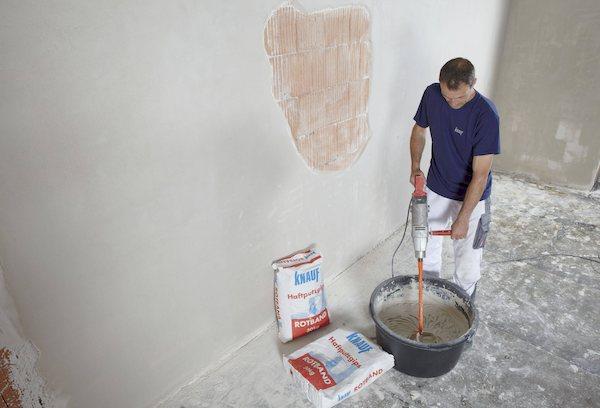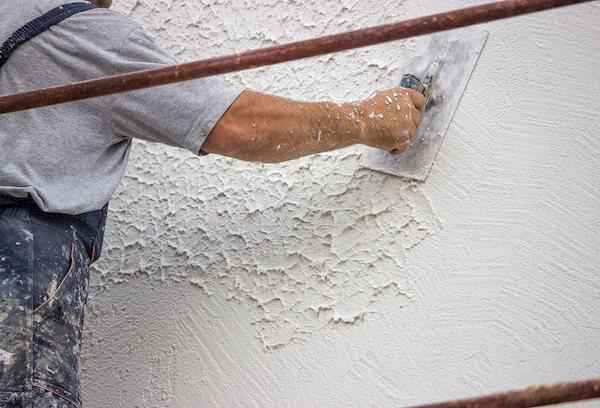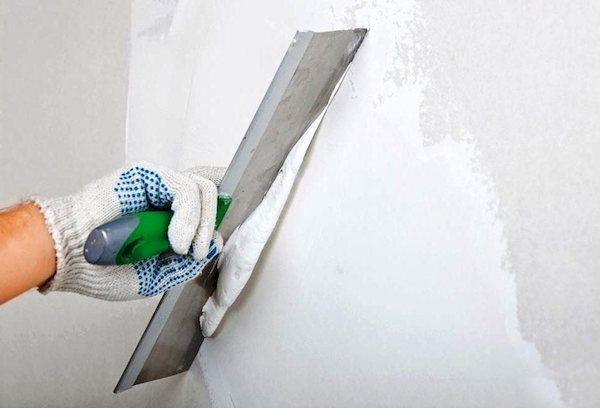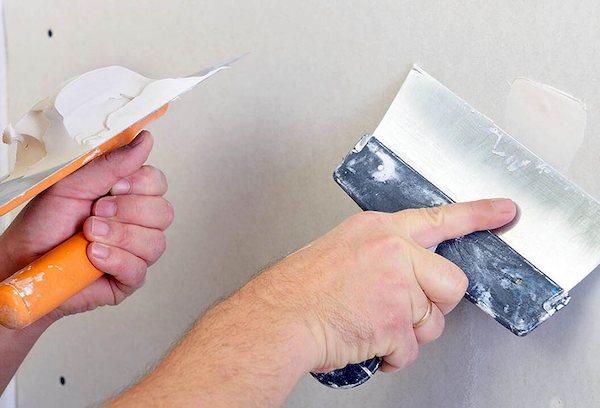What is the difference between plaster and putty
Content:
To understand the difference between putty and plaster, you need to understand the properties of the materials. Plaster is a mixture of gypsum, sand and cement, used for the rough finishing layer; it evens out differences of up to 3-5 cm. The composition includes larger fractions that are responsible for adhesion to the surface and filling of recesses and irregularities. After drying, the surface becomes grainy and requires further leveling with putty.
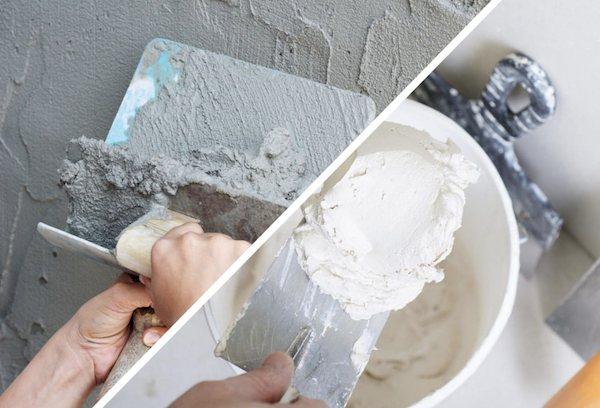
The putty is thinner, more flexible, and covers minor flaws and roughness, leaving the surface smooth and uniform. The composition is more varied than that of plaster (gypsum, polymers, acrylates, plasticizers and other impurities). The maximum layer thickness is no more than 0.5 cm; this mixture is not intended for leveling large defects. After filling, the walls are ready to apply the finishing material.
Comparative characteristics
Putty and plaster are visually similar - in dry form it is a loose mixture; to prepare for work, it is stirred with water until it becomes a paste. The color varies from light beige to whitish-gray (depending on the ratio of gypsum, sand and cement in the composition).The main differences and characteristics of these finishing materials are shown in the table below.
| Characteristics | Plaster | Putty |
| Granularity of dry mixture fractions | 1-1.5 mm | 0.05 mm |
| Layer thickness | 3-5 cm | 0.5 cm |
| Purpose | Rough repair of cracks, gouges, leveling of plane differences | Finishing, smoothing out minor irregularities |
| Primer before application | Required | Not required |
| Application method | Throws on the wall and levels with the rule | Apply and level with a spatula |
| Finishing | Not required | Needs sanding |
What is plaster
Plaster is a mixture for finishing walls and ceilings that forms a hard, durable layer when hardened. The main difference is in the composition: they use sand as a filler, gypsum or lime binders and a cement hardener. There are types without cement, but they are only suitable for rooms with a humidity of no more than 60%. For facade work, the addition of cement is mandatory.
The properties are divided as follows:
- leveling (preparation for finishing);
- decorative (“bark beetle”, Venetian, Moroccan);
- special (fire retardant, barite, noise insulating).
Plaster leveling work is quite simple to perform. Beginners can also learn, and the process can also be mechanized (advisable for large volumes of work). A container for diluting with water, a spatula and a trowel (or a rule) will suffice as tools.
| pros | Minuses |
| Resistance to cracking | Requires preliminary dust removal and surface priming |
| Good adhesion to the surface being repaired | Decorative varieties require high skill from the plasterer |
| Suitable for deep defects | Poor ductility |
| Resistance to mechanical stress | In new buildings, cracks may appear after the house settles |
| Does not shrink after drying | Some types require a long period of strength development |
Advice! The surface should be thoroughly cleaned of the old finish, dusted and soaked with soil selected according to the type of base. These measures will ensure reliable adhesion of the finish.
What is putty
Typically, the putty is a powder mixture; less commonly, paste-like putties for walls are sold, ready for application and not requiring dilution with water. Such materials are more expensive than bulk materials; plasticizers are added to their composition and are characterized by high plasticity and hiding power.
Based on their composition, they are usually divided into the following types:
- gypsum (thin, plastic, but less durable);
- cement (durable, suitable for wet rooms and outdoor use);
- polymer (multi-purpose, moisture resistant, but more expensive).
Also divided into starting, finishing and combined mixtures. Starting putty is required for complex wall defects for additional leveling after plastering. Larger fractions in the composition provide better adhesion. Finishing ones are suitable for a thin layer before applying finishing materials. Combined ones are used universally, applied in 1-2 layers.
| pros | Minuses |
| Apply to plaster without additional preparation | Poor adhesion requires thin layer application |
| Allows you to level the surface to perfect smoothness | Not suitable for repairing deep defects |
| High ductility | Excessively fast hardening |
| Dries quickly after application | Requires further sanding |
What is better to choose
It is difficult to compare plaster with putty; there is a great difference in composition, properties and purpose. Each material has different properties necessary to achieve the purpose of the work. The plaster should adhere well to the surface and smooth out large defects. The putty is flexible and covers minor imperfections, preparing the surface for finishing.
Questions and answers
When to putty after plastering?
The timing depends on the type of plaster and the thickness of the applied layer. Light mixtures with a predominance of gypsum, applied in a layer of up to 2 cm, can be finished within a week. Cement plasters and finishing with a thicker layer will dry completely in 14-20 days. A common mistake made by beginners is to apply the finish after a few hours/a couple of days, when the plaster has already visually dried, but has not gained strength. On such a surface there is a risk of chips and cracks.
Why does putty harden quickly?
The more gypsum in the mixture, the faster the plaster hardens. Light white mixtures set in 20-30 minutes. It is better to knead a small amount so that you have time to use up the material. Dilution with water is allowed (no more than 10% of the total mass) at the stage when the mixture is just beginning to thicken.
Will the plaster stick to the putty?
Plaster should be applied as the first layer, putty second. The sequence cannot be confused - the putty has worse adhesion and will peel off from the surface being repaired. Plaster is not suitable for finishing due to the granularity of the filler. After drying, it will not be possible to sand it to perfect smoothness.
Understanding the differences in the composition and properties of finishing materials will ensure the quality of construction work.You should carefully study the instructions and follow the manufacturer's recommendations. Otherwise, the result may be disappointing and you will have to redo the repair.
